L. Reuteri Resources
I’m certainly enjoying this yogurt-like goodness. https://www.luvele.com/blogs/recipe-blog/new-improved-l-reuteri-yogurt-method https://pubmed.ncbi.nlm.nih.gov/36286493/
This food feature article was published in an earlier edition of A Healthy You.
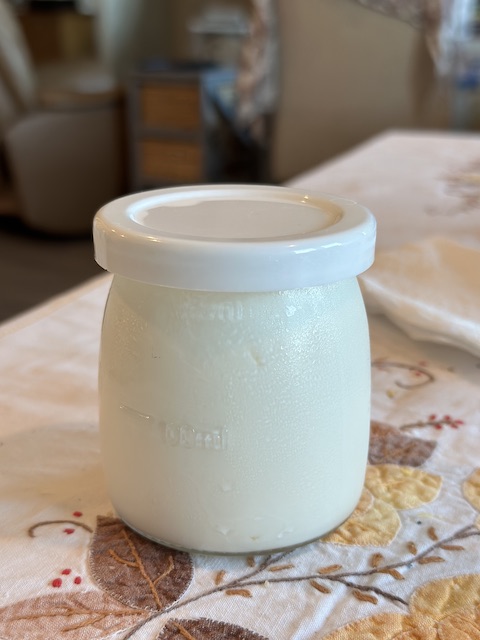
I’m certainly enjoying this yogurt-like goodness. https://www.luvele.com/blogs/recipe-blog/new-improved-l-reuteri-yogurt-method https://pubmed.ncbi.nlm.nih.gov/36286493/
Food Focus: Collard Greens Prep Time: 10 minutesCooking Time: 20-40 minutes (depending on cookware)Yield: 2-3 servingsIngredients 1 bunch of fresh collard greens (chopped)1 onion, thinly slicedfresh garlic (as much as you want)olive oilsoup broth (vegetable or chicken broth)salt & pepper to taste (we used smoke-seasoned salt)red chili flakes to tastetabasco to tasteDirectionsSauté minced garlic in olive oil…
Meal Idea – Salad Lunch time! pic.twitter.com/5X8AygPpdc — RuthAntebiGuten ⭐⭐⭐ (@RuthAntebiGuten) June 1, 2020 After Rosangel & I finished the Cafecit Break podcast, I went to run an errand with my Mom. When I returned, my hubby had made a salad!!! I must confess that I was really hungry. I made some cool celery juice…
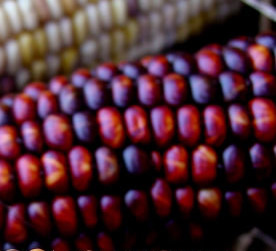
Food Focus: Blue Corn I’ve been intrigued by the nutrition value of blue corn since Dr. Roby Mitchell first introduced me to his BALi Eating Plan several years ago. Blue corn is also known as Hopi maize, It is grown in Mexico and U.S., particularly in Arizona and New Mexico and has advantages over white or…
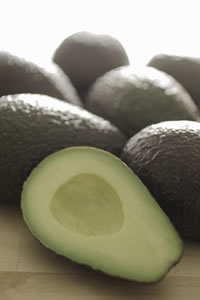
Food Focus: Essential Fatty Acids In a previous post, Food Focus: Oils and Fats I wrote about Healthy Fats. This post focuses on Essential Fatty Acids (EFA’s), which are an important component of a balanced nutrition plan. Here’s why: They are necessary for building & protecting healthy cell membranes. They surround your cells & keep…
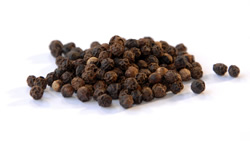
Food Focus: Peppercorns We are all familiar with black pepper as a seasoning. How many of us know that it is actually a medicinal berry that grows from a vine? Black, white, and green peppercorns are all berries from the same vine. Black peppercorns are actually dried green peppercorns that are picked before they ripen. If they…
Food Focus: Tomatoes Folklore Tomatoes used to be grown solely for decorations. In fact, during Colonial times, tomatoes were thought to be poisonous and that its poison would turn blood into acid. Meanwhile, the native people of South and Central America regarded tomato seeds as aphrodisiacs. The first tomatoes were probably first cultivated in Peru…
Food Focus: Mesclun What is Mesclun? I didn’t know either. That is, until we received an order from the Organic Food Coop we used to use before we bought our Tower Garden. Here’s the Wikipedia version: “Mesclun is a salad mix of assorted small, young salad green leaves, that originated in Provence, France. The traditional mix…
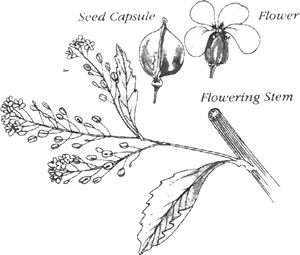
Food Focus: Horseradish Did you know that for centuries horseradish was thought of as a medicine and not as a condiment? In the 1500’s, it was known in England as “Red Cole” and it grew wild in several areas of the country. Horseradish can be used medicinally as the root contains an antibiotic substance as…
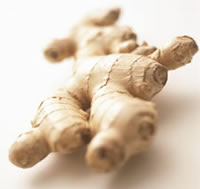
Food Focus: Ginger Ginger has been used for centuries. It was used by the Greeks as early as 4400 years ago and by the Spanish in the 16th century. It is spicy, yet soothing and is an easily recognizable ingredient in Oriental cuisine. Ginger is widely used in cooking and in the healing arts, as…
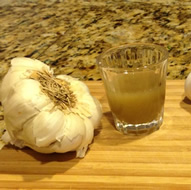
It Burns So Good! Last month, on Rosh Chodesh (the New Moon), I joined hundreds of people across the globe in a “virtual” event. I was invited to the Master Tonic Party. Ok, so it sounds pretty weird. Actually, it was tremendous fun! I have been asked by many of my friends to post the…
Food Focus: Pineapple Did you know that pineapple is a compound fruit? I didn’t even know what a compound fruit was until I did my research for this article. A compound fruit is a fruit that develops from many small fruits that become fused together around a central core. It’s low in calories: around 50…
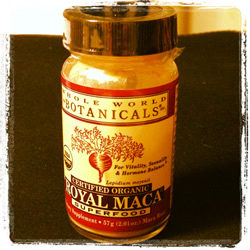
Food Focus: Maca Powder Maca powder is a super food. Dried maca root contains about 10% protein that is mostly obtained from amino acids, which are the building blocks of protein. It is grown in the Andes Mountains and has historically been a valuable commodity to the indigenous people of the Andes Mountain region. It…

Food Focus: Bananas As you probably already know, the fruit named banana is a high calorie tropical fruit. A serving of 100g of bananas (approx. 2/5 cup smashed bananas) contains around 90 calories. It is easy to digest and provides almost immediate energy due to its simple sugars like fructose and sucrose. It also contains…

Food Focus: DATES Dates are fruits that grow on date palms. They have been used since the times of Mesopotamia and ancient Egypt. Dates are very sweet and nutritionally packed essential nutrients, vitamins, and minerals. Dates are rich in dietary fiber and contain tannins (flavonoid antioxidants that are thought to have anti-inflammatory properties). In terms…
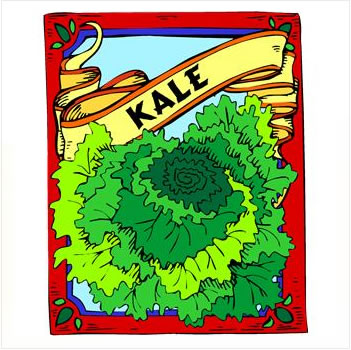
Food Focus: Incredible Kale KALE: Kale is rich in flavonoid compounds, such as lutein, zea-xanthin and beta-carotene. A 100g (approx. 1-1/3 cup) contains 3.3g of protein. Yes, protein! In terms of percentage of RDA, it also contains: Vitamins Folates – 7% Niacin – 6% Pantothenic acid – 1.5% Pyridoxine – 21% Riboflavin – 10% Thiamin…
Food Focus: Strawberries Strawberries are one of the best things you can feed your body everyday. They are low in fat, sugar, and carbohydrates but have been known to pack a great punch when it comes to the benefits. They are high in Vitamin C, Folate, and Potassium. They are great for repairing your facial…
Spice Focus: Saffron Saffron has been said to be the most expensive spice in the world.The spice is obtained from the stamens of the saffron crocus. The flowers are hand picked and the stamens are hand plucked, one at a time. The stamens are fine, red yellow threads. Much of the best saffron is grown…
Food Focus: Lentils Lentils are legumes that are packed with nutrition. They are low in calories and high in fiber. Lentils also contain high levels of magnesium and folate, which are beneficial for heart health. Here are some good reasons to enjoy lentils on a regular basis: They are good for your heart. They are…
Food Focus: Onion Onion: Onions (Allium cepa) belong to the lily family, the same family as garlic, chives, and shallots. Health Powers: Onion is effective against many bacteria including Bacillus subtilis, Salmonella, and E. coli. Onion extracts, rich in a variety of sulfides, provide some protection against tumor growth; and are used in relief treatment…
Food Focus: Coconut Milk Coconut milk can be bought ready-made or made from scratch. It is used as a staple in many tropical climates, where, according to local people, it is similar to mother’s milk and is considered a complete protein. Coconut products are especially beneficial to thyroid patients. Edward Bauman, Ph.D. is founder and…
Food Focus: Winter Squash (This article appeared in the October 2011 issue of A Healthy You and was prepared as part of a collaborative effort with other IIN Health Coaches).) As members of the Curcurbitaceae family, winter squash come in a multitude of sizes and colors. With hard shells, some have a shelf life of…
Food Focus: Natural Sweeteners (This article was previously published in the September edition of A Healthy You). Who among us doesn’t love sweets? The sweet flavor releases serotonin in our brains, the chemical responsible for our sense of well-being and contentment. But when it comes to sweeteners, not all are created equal. There are side…
Maple Syrup Maple syrup is the concentrated extract of the sap of maple trees. It adds a rich, deep flavor to foods and drinks. Make sure to look for 100% pure maple syrup, not maple-flavored corn syrup. As with all sweeteners, organic varieties are best. Adapted from “The Cane Mutiny,” New Age Magazine, March/April 1999.
Agave Nectar (This article previously appeared in the September edition of A Healthy You). Agave is made through the extraction and purification of the juice of the agave cactus. It does not stimulate insulin secretion as other sugars do, so it does not create a “sugar rush.” It has a delightfully light and mild flavor.
Raw Honey (This article previously appeared in the September edition of A Healthy You.) Everyone seems to love honey, one of the oldest natural sweeteners on the market. The flavor of honey varies depending on the plant source. Some are very dark and intensely flavored. Wherever possible, choose raw honey, as it is unrefined and…
Food Focus: Water Most of us are aware of the importance of drinking enough water. Getting our daily dose of water helps our organs perform their functions, keeps our skin clear and hydrated, and allows physical action in our bodies to flow smoothly. Even with this knowledge, it can still be challenging to drink all…
Food Focus: Mushrooms (This article appeared in the April, 2011 issue of A Healthy You.) Mushrooms are low in saturated fat and sodium and are very low in cholesterol. They are also a good source of dietary fiber, protein, vitamin C, folate, iron, zinc and manganese and a very good source of vitamin D, thiamin,…
Food Focus: Summer Squash (This article appeared in the May,2011 issue of A Healthy You) Squash comes in many shapes, colors, and sizes. Did you know that squash is the fruit of different members of the gourd family? (THINK PUMPKIN) There are two major classifications of squash: winter and summer squash. Summer squashes are harvested…
Food Focus: Sprouts (This article appeared in the May,2011 issue of A Healthy You) In the spring season, seeds flaunt their vitality and energy by sprouting. Sprouts of all varieties contain the building blocks of life in the form of vitamins, enzymes, amino acids and simple sugars. In their early growth state, sprouts are very…
Food Focus: Raw and Cooling Salads (This article appeared in the July, 2011 issue of A Healthy You) Why is it that in the summer we naturally crave more fresh and raw foods? These foods have a cooling effect on the body. The lightness and high water, fiber and vitamin content work together to act…
Food Focus: Almonds Many people think that nuts are fattening, so they stay away from them. I am here to tell you that although almonds are high in fat content, approximately 90% of the fat content is unsaturated. According to The Health Ranger, Mike Adams, research has shown that almonds actually lower blood cholesterol levels….
Food Focus: Fruit (This article appeared in the June, 2011 edition of A Healthy You) A healthy lifestyle is the key to longevity, optimum weight, abundant energy and balance. By using fruit to satisfy our taste for sweetness, we can leave behind the use of chemical, processed and refined sweeteners. Fruits are easy to digest,…
Herb Focus: Garlic (This article appeared in the April, 2011 issue of A Healthy You.) Garlic is one of the oldest known medicinal plants. It has been used for ages to treat many conditions, such as: colds, skin disease, parasites, joint problems and arthritis, cysts and growths, and fluid retention. It is also useful in…
Food Focus: Greens (This article appeared in the April, 2011 edition of A Healthy You) Leafy greens are some of the easiest and most beneficial vegetables to incorporate into your daily routine. Densely packed with energy and nutrients, they grow upward to the sky, absorbing the sun’s light while producing oxygen. Members of this royal…
Food Focus: Walnuts Walnuts are rich in protein and high in potassium, zinc and iron. They are the fruit from a tree in the walnut family Junglandaceae. Most of us are familiar with the “nut” which is found inside the hard shell. But did you know that other parts of the walnut tree have beneficial…
Food Focus: Quinoa This article appeared in the March, 2011 issue of A Healthy You. Quinoa (pronounced keen-wah), is a nutritional powerhouse with ancient origins. It was originally cultivated by the Incas more than 5,000 years ago; they referred to it as the “mother of all grains.” It contains all nine essential amino acids, making it…
Food Focus: Beans (This article appeared in the February, 2011 issue of A Healthy You.) Beans. They are good for the heart. Beans are found in most traditional cultures as a staple food, offering grounding and strengthening properties that enhance endurance: Beans, or legumes, which include peas and lentils, are an excellent source of plant-based…

Food Focus: Chocolate Ahhh! Chocolate! The thought of it can bring up certain emotions. Chocolate has been associated with love for generations. Almost everyone I know loves chocolate! Many of us have even been known to crave the stuff. But did you know that chocolate has many amazing health benefits? Cacao is high in iron,…
Food Focus: Sea Vegetables Sea Vegetables (This article appeared in the January, 2011 issue of A Healthy You). In traditional Chinese healing, sea vegetables correspond to the winter season and to the kidneys, adrenal glands, bladder and reproductive organs. The strengthening, balancing and cleansing properties of sea vegetables are known to help these organs as…
Cilantro (This article appeared in the December, 2010 issue of A Healthy You.) The leaves of the coriander plant are called Cilantro. It is also known as Chinese Parsley. It is a sweet and fragrant herb that has been used medicinally in many cultures for many years. It is also a very good source of…
Food Focus: Sweet Potatoes (This article appeared in the December, 2010 issue of A Healthy You.) Sweet potatoes are on everyone’s mind this season. They seem to go hand in hand with the holidays, and fortunately, eating these and other sweet vegetables needn’t be limited to this time of year. If you don’t have any…
FOOD FOCUS: OILS AND FATS (This article appeared in the November, 2010 issue of A Healthy You.) Not all oils and fats are created equal. Heavily processed, hydrogenated, “trans” fats and oils that are used in prepared, packaged foods can be extremely damaging to the body. However, fats and oils from whole foods and other…
Food Focus: Root Vegetables (This article appeared in the October, 2010 issue of A Healthy You.) The roots of any plant are its anchor and foundation; they are the essential parts that support and nourish the plant. Root vegetables lend these properties to us when we eat them, making us feel physically and mentally grounded…